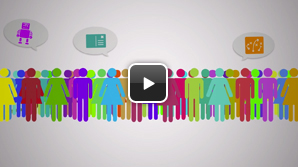Every business’ time is precious – waste it and you’re wasting the chance to make more money. That’s why it’s important to make life as quick and easy as possible when it comes to your accounts. Paying VAT is one of those things that many businesses have to do – but there’s no reason why it has to take up too much of your time.
The best way to ensure this is the case is to pay your VAT online. How’s it done? Here’s our quick guide to get you up and running:
VAT online: How to register to pay
Once you’ve registered to pay VAT – we’ve covered that in our guide here – you just need to follow a short process to be able to pay online.
Firstly, apply to pay HMRC VAT via the Government Gateway here. You’ll need to have a few things to hand before you can sign up:
- VAT number
- Principal Place of Business postcode
- Date of registration for VAT
- The final month of last VAT return submitted
- Your ‘Box 5 figure’ on last VAT return submitted
Activate your account and you’re ready to pay VAT
Filling in a few details will then give you a user ID and you’ll then be sent an activation PIN. Use this and the process will be finished – it’s that simple – you’re then free to use HMRC’s online services whenever you need to.
You have a choice of methods when it comes to paying VAT online. Same or next day payments can be made with Faster Payments or CHAPS, while Direct Debit, Bacs, standing order or debit and credit card can be used to make payments that typically take three working days to process.
However, since lots of VAT registered businesses use KashFlow we’ve made the process of paying and recording VAT payments streamlined and straightforward.
The majority of the work is done automatically, so it’s just a matter of clicking a few buttons to make sure the payment is recorded in your accounts.
Paying VAT online with KashFlow
Submitting a VAT return automatically makes an entry into your accounts, so the amount of VAT you owe is recorded against the ‘VAT Control’ code. This will help you to make sure that you don’t lose track of the payment.
Once you’ve submitted your VAT return (see how this is done here), you will need to show the VAT payment in your bank account in KashFlow. This is a very simple process, and is done in the same way as entering any other transaction into your bank account in KashFlow.
You need to pay VAT at the end of every accounting period, typically every three months. You can learn more about how to do VAT returns on this page.
Recording VAT payments in KashFlow
To record the fact you’ve made a VAT payment, just click on the Bank tab and then click ‘View/add transactions’ next to the bank account from which you are paying HMRC.
Once you’ve selected the correct bank account, it’s simply a case of adding a transaction to the account to show money going out for the relevant amount.
You can also enter any other relevant information here, like the date the VAT payment was made and other comments you may wish to make about the payment. You can learn more about what you need to include in a VAT invoice here.
When entering the payment, you should make sure to select ‘VAT Control’ from the drop-down list for the ‘type’ of transaction.
Once all that’s done, just click ‘Enter Transaction’ and the VAT payment will be recorded in your accounts.
What records do I need to keep when it comes to paying VAT?
As a minimum, you must keep:
- Copies of all invoices you’ve issued or received
- Self-billing agreements, which are VAT invoices prepared by the customer
- Debit and credit notes
- Import and export records
- Records of anything you can’t reclaim VAT on
- Records of goods you’ve given away or taken from your stock for private use
- Records of any exempt or zero-rated VAT items you’ve bought or sold.
- A register of your VAT accounts
What is a VAT Account?
A VAT account is a record of the VAT you charge and pay on your purchases. The figures in this VAT account are used in your VAT return.
VAT accounts need to include:
- Your total VAT sales and purchases
- The VAT you owe
- The VAT you can reclaim
- The VAT on EU purchases or sales
- If applicable, your Flat Rate percentage and its relevant turnover
Take this advice on board for your business and paying VAT need not be a headache, freeing up your time to concentrate on something more fun!

